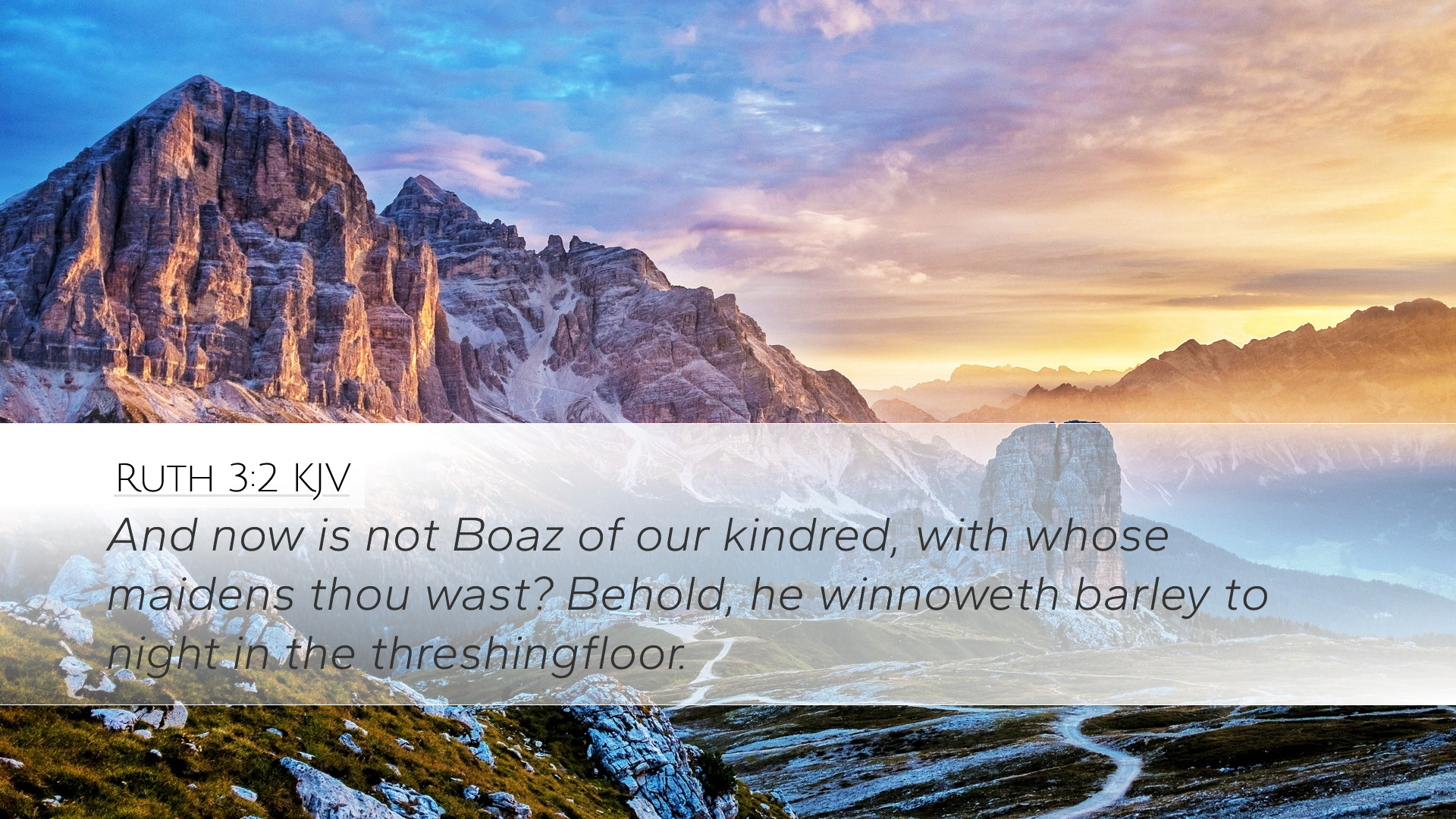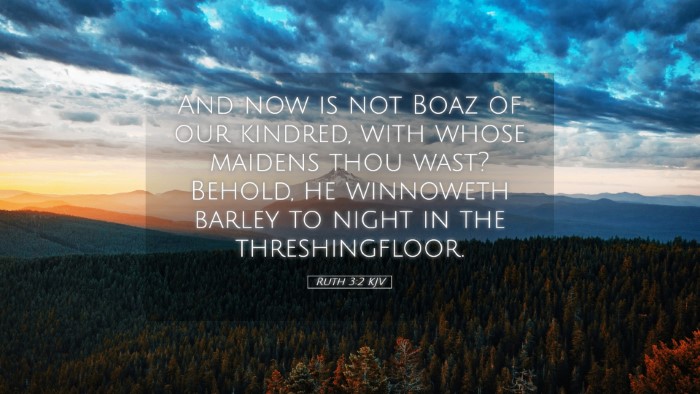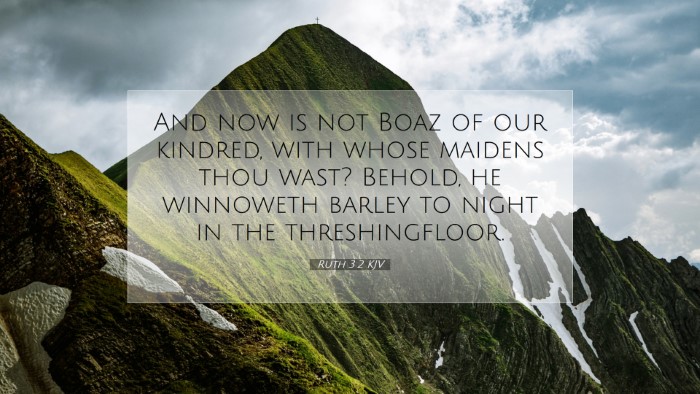Old Testament
Genesis Exodus Leviticus Numbers Deuteronomy Joshua Judges Ruth 1 Samuel 2 Samuel 1 Kings 2 Kings 1 Chronicles 2 Chronicles Ezra Nehemiah Esther Job Psalms Proverbs Ecclesiastes Song of Solomon Isaiah Jeremiah Lamentations Ezekiel Daniel Hosea Joel Amos Obadiah Jonah Micah Nahum Habakkuk Zephaniah Haggai Zechariah MalachiRuth 3:2
Ruth 3:2 KJV
And now is not Boaz of our kindred, with whose maidens thou wast? Behold, he winnoweth barley to night in the threshingfloor.
Ruth 3:2 Bible Commentary
Bible Commentary on Ruth 3:2
Ruth 3:2 (NIV): "Now Boaz, with whose women you have worked, is a relative of ours. Tonight he will be winnowing barley on the threshing floor."
Contextual Background
This verse occurs within the narrative of Ruth, a story rich in themes of loyalty, providence, and redemption. Ruth, a Moabite widow, has committed herself to Naomi, her Israelite mother-in-law, exemplifying steadfast loyalty. Boaz, a wealthy relative of Naomi's deceased husband, is introduced as a man of standing who operates in accordance with the customs and laws of Israel. His role as a kinsman-redeemer is pivotal in both the cultural and legal contexts of the day.
Theological Insights
Ruth 3:2 provides insight into the operation of divine providence in the lives of God’s people. Here, Naomi acknowledges Boaz's position and his connection to her family—showing the interplay between faith, human action, and divine favor. The gathering at the threshing floor is not merely agricultural; it symbolizes hope, renewal, and the unfolding of God's redemptive plan.
Commentary Insights
Matthew Henry's Commentary
Henry emphasizes the significance of family ties in the Jewish society and highlights Ruth’s diligent work alongside the women of Boaz. He remarks that this connection is essential because it positions Ruth for her eventual favor. The act of winnowing, done at night, indicates the importance of discretion as well as the timing of God's plan.
Albert Barnes’ Notes
Barnes elucidates the importance of knowing Boaz’s work schedule, noting that Ruth’s strategy to approach him at the threshing floor reflects a calculated move by Naomi. This was not a decision made lightly but was grounded in knowledge of cultural customs. Ruth’s involvement here signifies the act of faith in the midst of uncertainty, showcasing her willingness to step out and pursue a life of security.
Adam Clarke’s Commentary
Clarke goes further to describe winnowing as symbolizing judgment and separation. He addresses Boaz's role both as a farmer and a redeemer, explaining how Ruth’s initiative to seek him out represents more than just a social outreach; it embodies a deeper spiritual pursuit for redemption. Clarke points out that it was common in cultural customs for women to approach men at the threshing floor, reinforcing the idea that this was a carefully planned courting move by Ruth.
Application for Today
The story contained within Ruth 3:2 challenges modern believers to understand the relationship between divine sovereignty and human initiative. The act of winnowing is akin to the separation of good and bad, and it calls believers to reflect on their own lives—how they are positioned within God’s plan and how they act in faith.
- Faith in Action: Just as Ruth took action based on the counsel of Naomi, believers today are encouraged to seek wisdom and act in faith.
- Understanding Relationships: The emphasis on familial and community ties underlines the importance of connectedness in the Body of Christ.
- Trust in God’s Timing: Recognizing the significance of timing in life’s pursuits can allow believers to align themselves with God’s providential plans.
Conclusion
Ruth 3:2 serves as a pivotal verse that introduces a crucial moment in Ruth's journey of faith. It encapsulates themes of hope, commitment, and the divine orchestration of relationships. For scholars and theologians, this verse is an invitation to delve deeper into the narrative not only to understand its historical context but also to derive applicable insights for spiritual growth and community living today.


